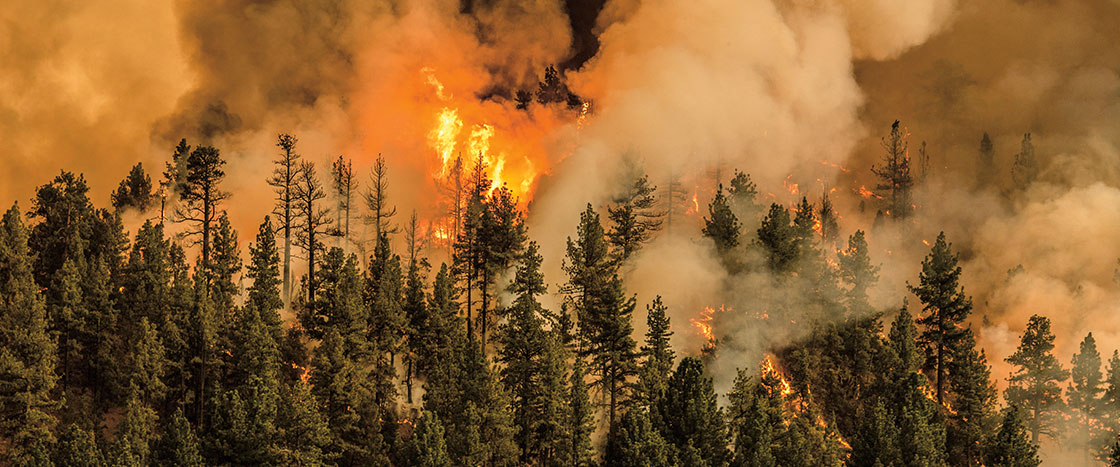Bim/Getty Images
a fire truck in a city
They drive their fire trucks to the fire.

You will read about someone who fights wildfires. Here are five facts to know first.
1. Many firefighters fight fires in cities and towns.
Bim/Getty Images
a fire truck in a city
They drive their fire trucks to the fire.
2. But fires can start in forests too.
Shutterstock.com
Lightning can strike trees. That can start a wildfire! That is a fire in nature. Wildfires can be very dangerous.
3. Wildfires can be far from cities and towns.
Trevor Bexon/Shutterstock.com
There may not be roads nearby. Firefighters can’t drive a fire truck to these fires. They must get to the fires another way.
4. Smokejumpers fly to a fire.
Alamy Stock Photo
A smokejumper
Smokejumpers fight fires that are hard to get to. They go to places where there are no roads. They fly in a plane to the fire. Then they jump down to fight it.
5. Smokejumpers are strong and brave.
Smokejumpers are ready. They put the fires out!
Now read about a brave smokejumper in . . .
More About the Article
Essential Question
The big question of this issue of Storyworks 2 is, How can we be brave?
Building Background Knowledge
This article gives kids background knowledge that will help them better understand this issue’s Big Read, “Jumping to the Fire,” on pages 6-11.
1. BEFORE READING
Preview Vocabulary (2 minutes)
Text Preview Bookmarks (5-10 minutes)
ELA Focus: Quiz (10 minutes)
ELA Focus: Write Key Details to Nosey at [email protected] (20 minutes)
Enrich the Learning: Paired Text Opportunities (15 minutes)
Scavenger Hunt Slide Deck (20 minutes)